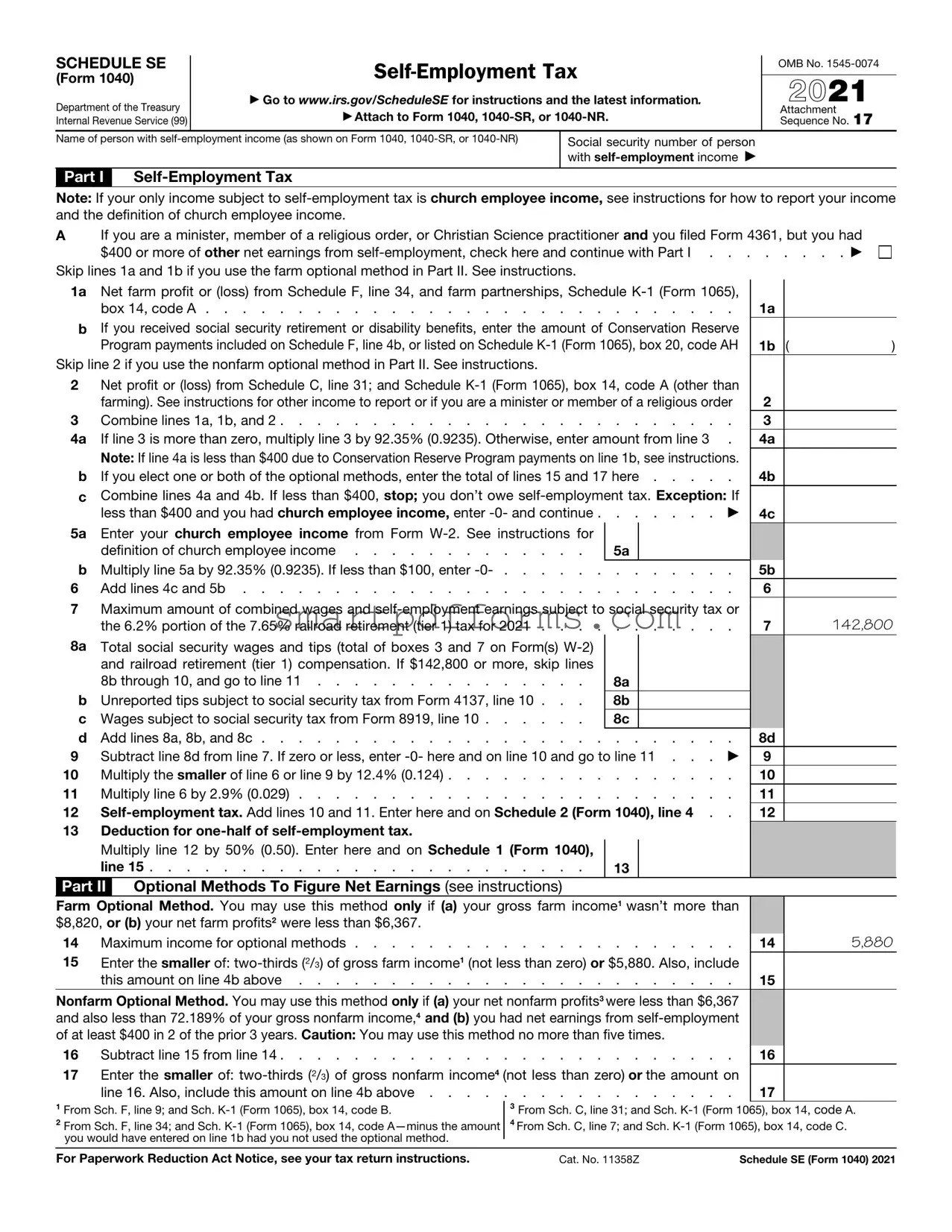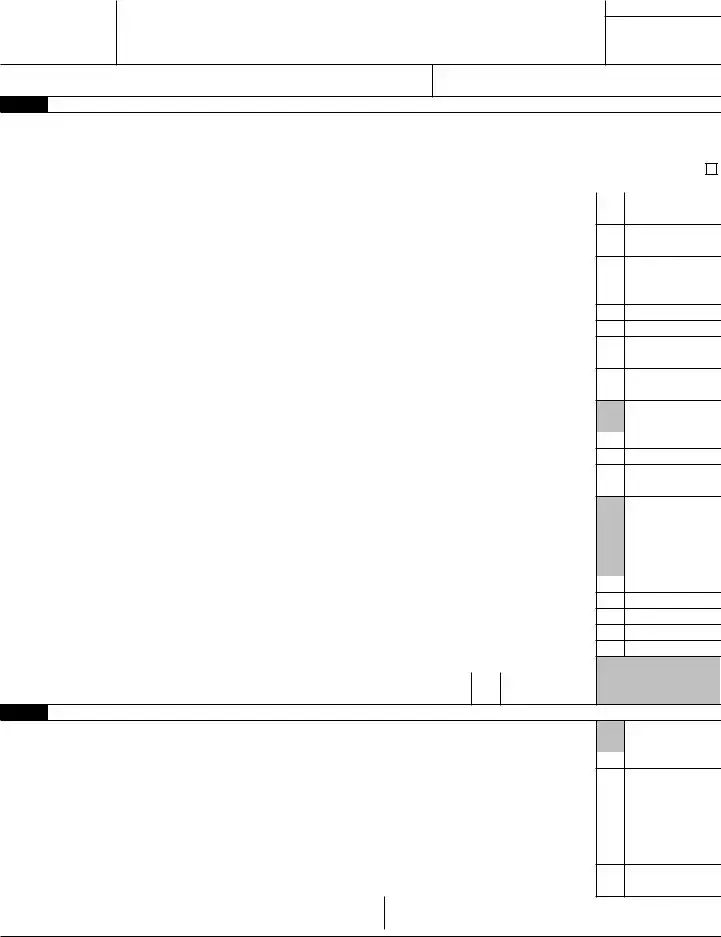1a Net farm profit or (loss) from Schedule F, line 34, and farm partnerships, Schedule K-1 (Form 1065), box 14, code A . . . . . . . . . . . . . . . . . . . . . . . . . . . . .
bIf you received social security retirement or disability benefits, enter the amount of Conservation Reserve Program payments included on Schedule F, line 4b, or listed on Schedule K-1 (Form 1065), box 20, code AH
Skip line 2 if you use the nonfarm optional method in Part II. See instructions.
2Net profit or (loss) from Schedule C, line 31; and Schedule K-1 (Form 1065), box 14, code A (other than farming). See instructions for other income to report or if you are a minister or member of a religious order
3 |
Combine lines 1a, 1b, and 2 |
4a |
If line 3 is more than zero, multiply line 3 by 92.35% (0.9235). Otherwise, enter amount from line 3 . |
|
Note: If line 4a is less than $400 due to Conservation Reserve Program payments on line 1b, see instructions. |
b |
If you elect one or both of the optional methods, enter the total of lines 15 and 17 here |
cCombine lines 4a and 4b. If less than $400, stop; you don’t owe self-employment tax. Exception: If less than $400 and you had church employee income, enter -0- and continue . . . . . . . ▶
5a |
Enter your church employee income from Form W-2. |
See instructions for |
|
|
|
definition of church employee income |
. . . . . . . |
5a |
|
b |
Multiply line 5a by 92.35% (0.9235). If less than $100, enter -0- |
6 |
Add lines 4c and 5b |
7Maximum amount of combined wages and self-employment earnings subject to social security tax or
the 6.2% portion of the 7.65% railroad retirement (tier 1) tax for 2021 . . . . . . . . . . .
8a |
Total social security wages and tips (total of boxes 3 and 7 on Form(s) W-2) |
|
|
|
and railroad retirement (tier 1) compensation. If $142,800 or more, skip lines |
|
|
|
8b through 10, and go to line 11 |
8a |
|
b |
Unreported tips subject to social security tax from Form 4137, line 10 . . . |
8b |
|
c |
Wages subject to social security tax from Form 8919, line 10 |
8c |
|
d |
Add lines 8a, 8b, and 8c |
9 |
Subtract line 8d from line 7. If zero or less, enter -0- here and on line 10 and go to line 11 . . . ▶ |
10 |
Multiply the smaller of line 6 or line 9 by 12.4% (0.124) |
11 |
Multiply line 6 by 2.9% (0.029) |
12 |
Self-employment tax. Add lines 10 and 11. Enter here and on Schedule 2 (Form 1040), line 4 . . |
13 |
Deduction for one-half of self-employment tax. |
|
|
|
Multiply line 12 by 50% (0.50). Enter here and on Schedule 1 (Form 1040), |
|
|
|
line 15 |
13 |
|
Part II Optional Methods To Figure Net Earnings (see instructions)

